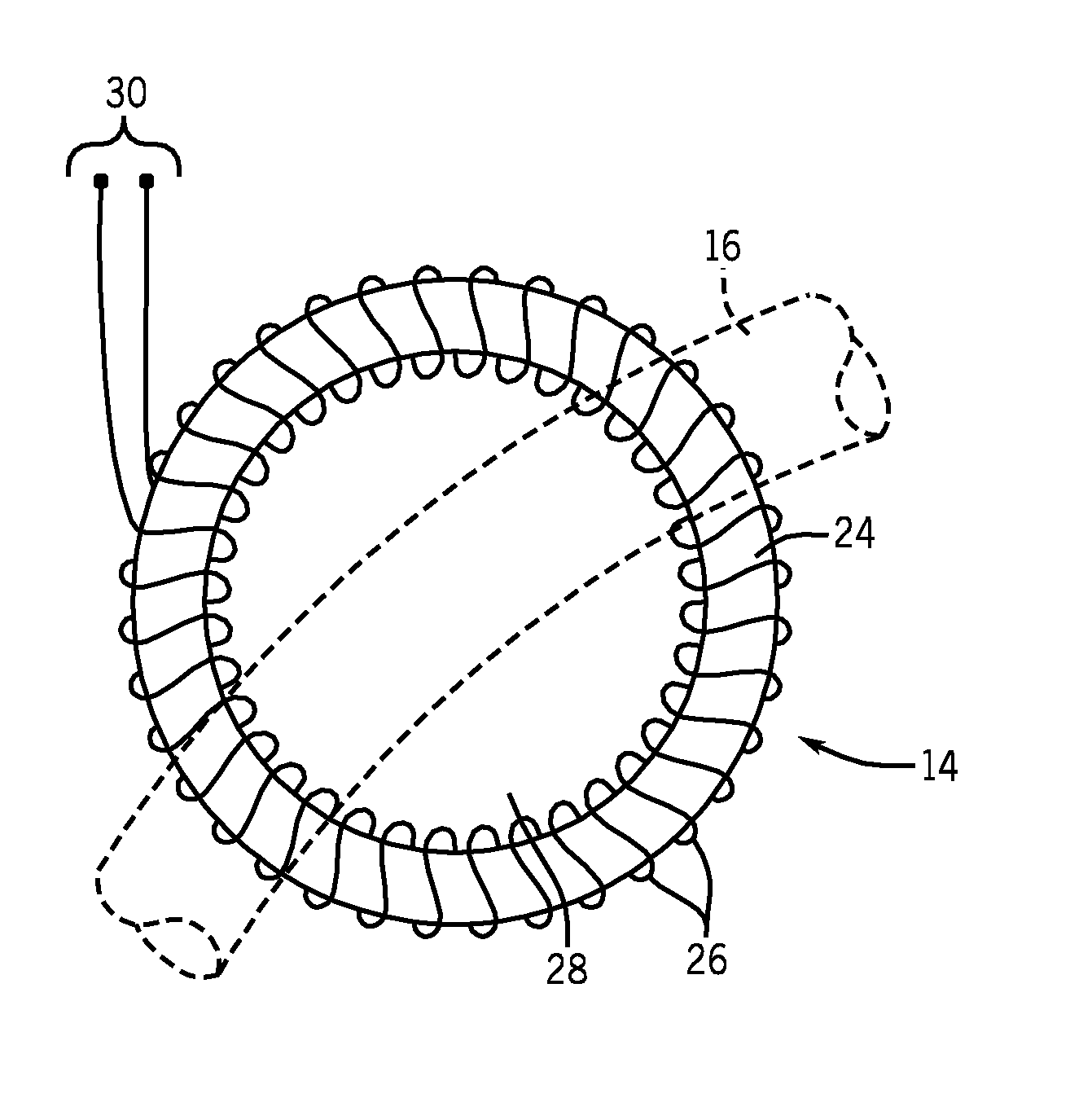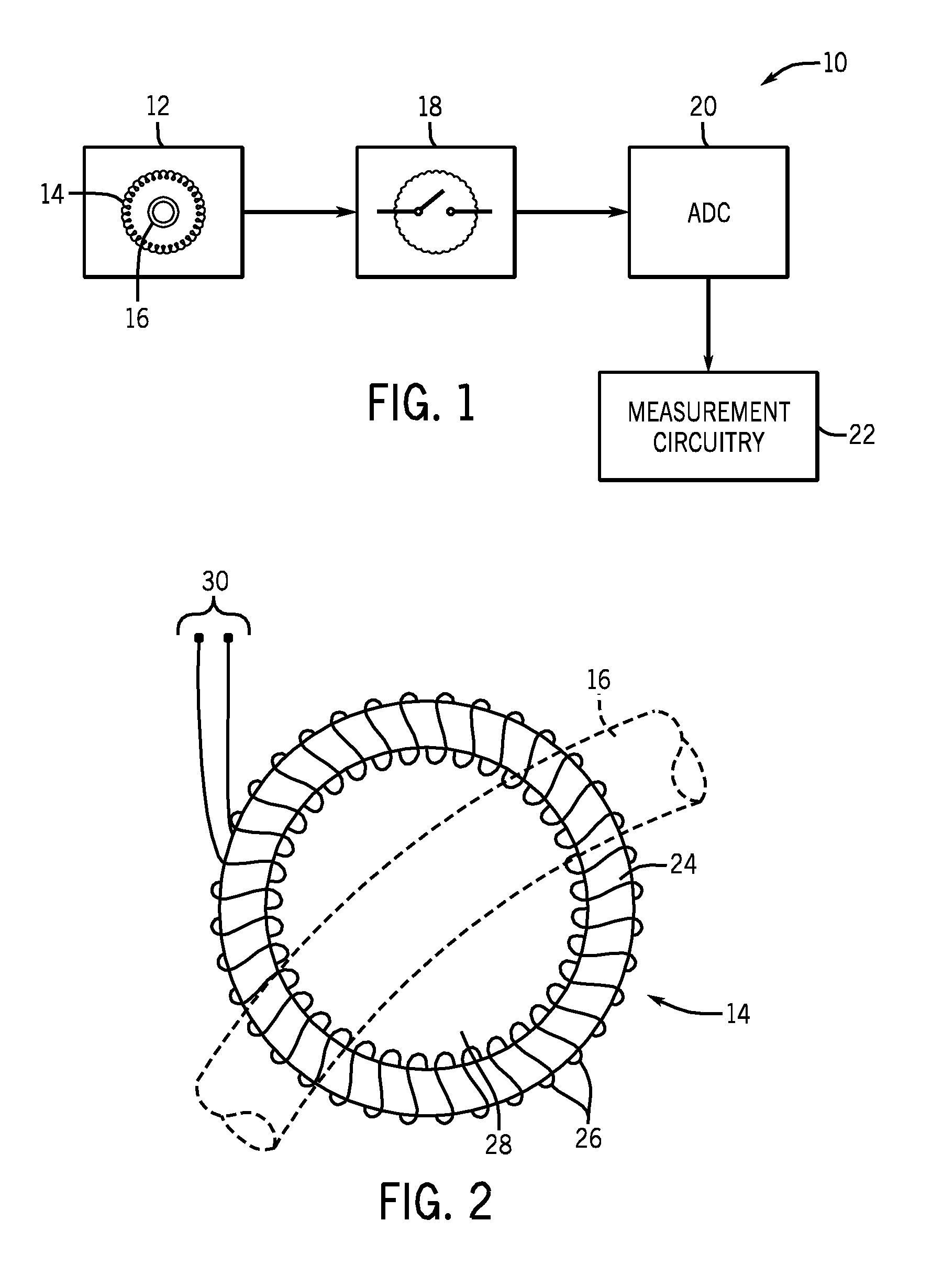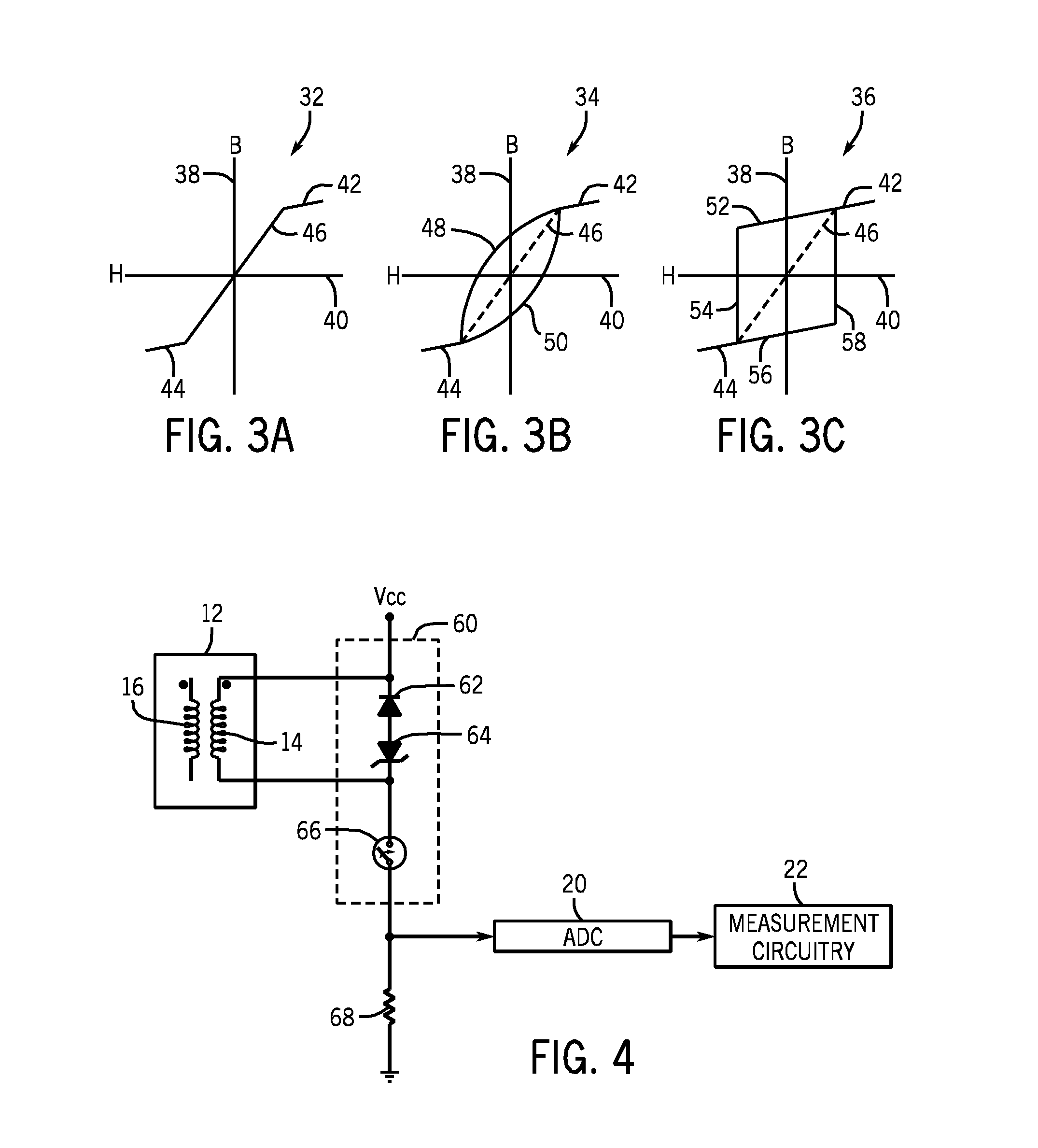Active core current sensor
a current sensor and active core technology, applied in the field of current sensors, can solve the problems of inability of current transformers and rogowski coils to operate to sense direct currents, and the inability to reliably detect current in conventional sensing circuits, and achieve the effect of high permeability materials
- Summary
- Abstract
- Description
- Claims
- Application Information
AI Technical Summary
Benefits of technology
Problems solved by technology
Method used
Image
Examples
Embodiment Construction
[0021]The technique disclosed below allows for sensing currents in a transformer-type sensing arrangement that includes a closed magnetic core, which may be made of a high permeability material. The technique samples current in a secondary circuit normally when the core is not saturated (which may be in a linear region of the BH hysteresis loop of the core), and by driving the core to a non-saturated region of a BH hysteresis loop of the core when the core is saturated (which may again be in a linear region of the hysteresis loop). This in turn causes the secondary current to flow that is proportional to the primary current by a turns ratio of the transformer. A power source may be used to supply the secondary current since the core flux is driven in an opposite direction with regard to the flux induced by the primary current. In situations where the core saturates, the output signal is available only during the time when the core flux density is in a non-saturated range of the BH h...
PUM
 Login to View More
Login to View More Abstract
Description
Claims
Application Information
 Login to View More
Login to View More - R&D
- Intellectual Property
- Life Sciences
- Materials
- Tech Scout
- Unparalleled Data Quality
- Higher Quality Content
- 60% Fewer Hallucinations
Browse by: Latest US Patents, China's latest patents, Technical Efficacy Thesaurus, Application Domain, Technology Topic, Popular Technical Reports.
© 2025 PatSnap. All rights reserved.Legal|Privacy policy|Modern Slavery Act Transparency Statement|Sitemap|About US| Contact US: help@patsnap.com



